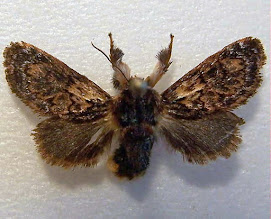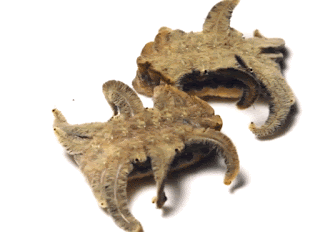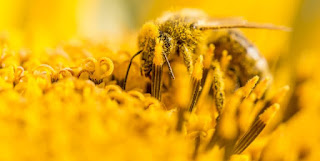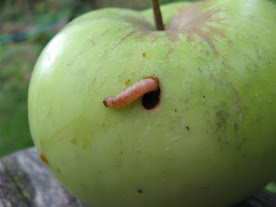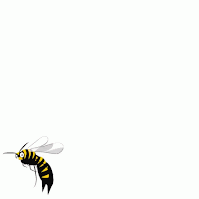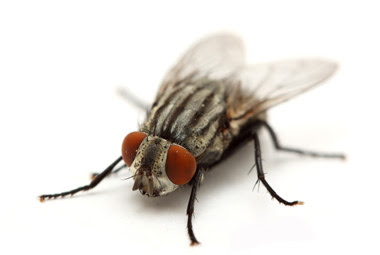Summer has arrived and the pandemic has lifted, so this
should be a happy time to be out amongst your trees and looking forward to
sharing your bounty. Unless you have Codling Moth worries, that is. And if you’re
growing the trees that Codling Moths like, then you most likely have reason to
worry.
I wrote about Codling Moth control back in March, when
keeping the moths from mating was the main concern. Now that summer’s here and
the fruit is plumping up fast, the worry has shifted to worms (aka larvae).
Even the most diligent and pro-active of growers who took every precaution in
the spring has reason to fret – Codling Moths are just that hard to get rid of.
But don't despair - here at ARBICO we have some exceptional weapons in the war against
crawlers. There are always the tried-and-true products, but there have also been some incredible innovations in the area of
biopesticides in the last 10 years or
so. These formulations have proven extraordinarily effective and very consumer friendly. Here’s a rundown of some of the best we have to offer that you can put to
work on your trees:
Bacillus Thuringiensis v kurstaki (Btk)
–
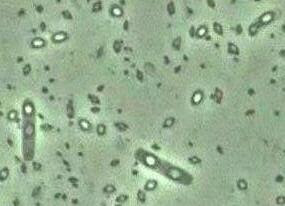
This naturally occurring bacterium can be used to control most
Lepidoptera pests and we have several products that work well against Codling Moth larvae. Btk insecticides are meant to be sprayed on the plant, where the pest insect will ingest it as part of their feeding behavior. Once ingested, the Btk bacterium will produce a toxin that disrupts the digestive system of the insect and causes it to stop feeding. The insect will die shortly thereafter. This process is extremely effective in controlling caterpillars (larvae), but the beauty of using Btk is that it is species specific and will only affect targeted pests. It not harm birds, bees, beneficials, or any other living organisms, so you can use it freely without worry. We have several Btk products that are labeled for Codling Moth in many formulations (Ready-to-Use sprays, Ready-to-Spray hose-end sprays, concentrates, and a flowable powder). You should be able to find the formula and price that fits your needs and budget. Check them all out here.
Isaria fumosorosea Apopka Strain 97 -
This is another naturally occurring microorganism, but in this case it’s an entomopathogenic fungus and not a bacterium. Spores of this fungus will grow on and spread through plant surfaces and soil. When it encounters a targeted pest,the spores will attach to the pest, enter its body and begin growing inside it. When the pest ultimately dies, the fungus will emerge as part of the decomposition process and continue to release spores and spread infection to the nearest host. In this way, the dead and dying pests continuously propagate the fungus. Like Btk, this biofungicide only works on specific pests and has limited effect on beneficials. We carry PFR-9720% WDG, an OMRI-listed, wettable granular product that can be applied in a variety of ways and combined with most fertilizers, herbicides, pesticides, and beneficial arthropods.
Cydia pomonella granulovirus (CpGV) -
 In many ways, this is the star of these biopesticides. This
baculovirus infects and kills only
the larvae of the codling moth. Sold as an aqueous suspension biological insecticide called CYD-X HP, this product offers extremely
effective targeted biological control. The baculovirus particles in this
product are naturally encapsulated within a protein occlusion body (OB) and, like the spores in PFR-97 20% WDG, they must be ingested to take
effect. Once the OBs are taken in, they will release the virus into the
pest’s body and it’s only a matter of time before death occurs. The virus will
replicate itself inside the body and decomposition will release billions of new
viral OBs into the world. They will then spread by rain, or gravity, or larval movement and infect any larvae they find in an ongoing cycle of infection. CYD-X HP contains 1 trillion OBs and only 1-2 OBs are needed for a lethal infection, so this is some powerful stuff. Numerous scholarly articles and popular websites have touted this as a game-changer for growers since it was first appeared on the scene 15 years ago and after you do a little research I think you’ll see why. This is not a cheap product ($165.99 for 6 oz.), but a little goes a long way (½ - 3 fl. oz. per acre) and it is worth every penny if it gives you piece of mind.
In many ways, this is the star of these biopesticides. This
baculovirus infects and kills only
the larvae of the codling moth. Sold as an aqueous suspension biological insecticide called CYD-X HP, this product offers extremely
effective targeted biological control. The baculovirus particles in this
product are naturally encapsulated within a protein occlusion body (OB) and, like the spores in PFR-97 20% WDG, they must be ingested to take
effect. Once the OBs are taken in, they will release the virus into the
pest’s body and it’s only a matter of time before death occurs. The virus will
replicate itself inside the body and decomposition will release billions of new
viral OBs into the world. They will then spread by rain, or gravity, or larval movement and infect any larvae they find in an ongoing cycle of infection. CYD-X HP contains 1 trillion OBs and only 1-2 OBs are needed for a lethal infection, so this is some powerful stuff. Numerous scholarly articles and popular websites have touted this as a game-changer for growers since it was first appeared on the scene 15 years ago and after you do a little research I think you’ll see why. This is not a cheap product ($165.99 for 6 oz.), but a little goes a long way (½ - 3 fl. oz. per acre) and it is worth every penny if it gives you piece of mind.

Any one of these products should go a long way in
alleviating most Codling Moth problems, but it is always best to hedge your
bets and implement more than on method of control. Please refer to our
Codling
Moth Control page for ideas and product suggestions to get you through the
summer.
Take Care.
Submitted by Pam





